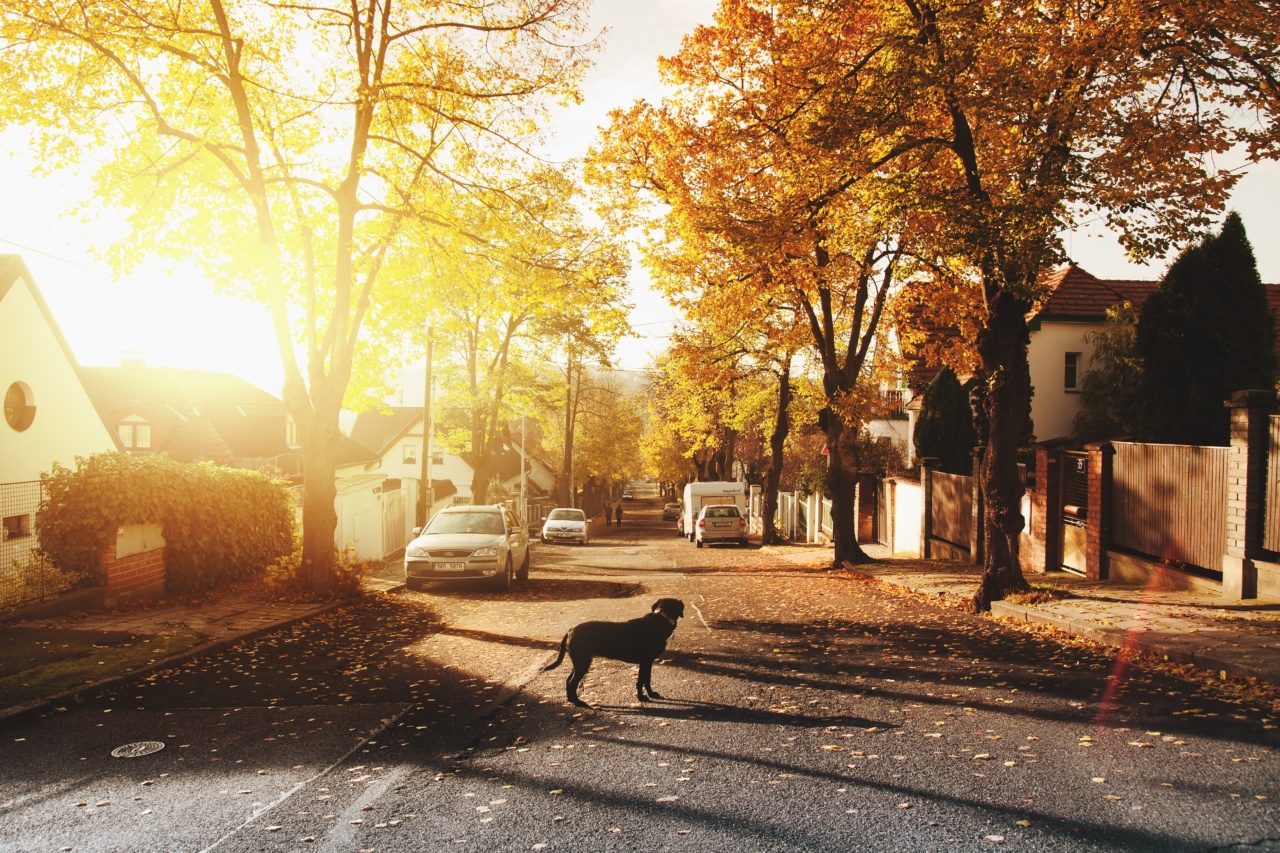Many dogs experience fear or anxiety when faced with certain situations or stimuli. One common fear among dogs is being scared in the shadow.
Shadows can appear intimidating and unfamiliar to some dogs, which can trigger their flight or fight response, causing distress or even panic. If your furry friend is scared of shadows, don’t worry! In this article, we will provide you with valuable tips and tricks to help your dog overcome their fear and build their confidence.
Understanding the Fear of Shadows
Before we delve into the ways to help your dog, it’s important to understand the root causes of their fear of shadows. Dogs may develop this fear due to various reasons, such as:.
- Past Traumatic Experience: If a dog had a negative experience associated with shadows in the past, they may develop fear or anxiety when encountering shadows again.
- Lack of Exposure: Dogs that weren’t properly exposed to shadows during their early socialization period may find them unfamiliar and potentially frightening.
- Unpredictability: The constantly shifting and changing nature of shadows can be confusing for dogs, triggering their instincts and leading to fear.
- Heightened Sensitivity: Some dogs are naturally more sensitive to environmental stimuli, which includes shadows. Even minor changes and movements can cause them to feel anxious or scared.
Identifying Signs of Fear in Dogs
It’s essential to recognize the signs of fear or anxiety in dogs before addressing their fear of shadows. Common signs include:.
- Panting excessively
- Tail tucking between the legs
- Trembling or shaking
- Pacing or restlessness
- Attempting to hide or escape
- Excessive barking or growling
- Refusing to eat or drink
If your dog exhibits any of these signs when encountering shadows, it’s clear that they are scared and require your support to overcome their fear.
Techniques to Help Your Dog Overcome the Fear of Shadows
Now that we understand the potential causes and signs of fear, let’s explore some effective techniques to help your dog overcome their fear of shadows:.
1. Positive Reinforcement and Counterconditioning
Positive reinforcement is a powerful tool to change your dog’s emotional response to shadows. Whenever your dog is exposed to shadows without displaying signs of fear, reward them with treats, praise, or playtime.
Gradually increase the intensity or duration of the stimulation, always ensuring your dog feels safe and comfortable. Counterconditioning involves associating shadows with positive experiences by redirecting your dog’s attention to enjoyable activities or distractions.
2. Gradual Desensitization
Gradual desensitization involves exposing your dog to shadows in a controlled and gradual manner. Begin by introducing shadows from a distance and at a level your dog feels comfortable with, providing treats or rewards for their calm behavior.
Slowly decrease the distance or increase the intensity of the shadows over time, remaining mindful of your dog’s comfort level. This technique helps your dog build up their tolerance to shadows and reduces their fear gradually.
3. Create a Safe Space
Designating a safe space for your dog can provide them with a sense of security when they feel scared. Set up a specific area in your home where your dog can retreat to whenever they encounter shadows or feel anxious.
Fill this space with their favorite toys, blankets, and comforting scents. This safe space will act as a sanctuary where your dog can relax and regain their composure.
4. Behavior Modification Techniques
Working with a professional dog trainer or behaviorist to develop behavior modification techniques can be beneficial in helping your dog overcome their fear of shadows.
They can assist you in implementing specialized training and desensitization exercises tailored to your dog’s individual needs, providing you with valuable guidance throughout the process.
5. Distraction and Diversion
Redirecting your dog’s attention away from the shadows can help alleviate their fear. Engage them in activities they enjoy, such as playing fetch, going for walks, or practicing obedience commands.
Interactive toys or food puzzles can also be effective in diverting their focus from the shadows and promoting positive experiences.
6. Environmental Management
Assess your dog’s environment to identify potential triggers that contribute to their fear of shadows.
Sometimes, rearranging furniture, using curtains or blinds to control the amount of light entering the room, or providing additional lighting can help minimize the impact of shadows. Creating a more predictable and well-lit environment can alleviate your dog’s uneasiness.
7. Calming Supplements or Medications
If your dog’s fear of shadows is severe and significantly affecting their quality of life, consult with a veterinarian to discuss the possible use of calming supplements or medications.
These can help reduce anxiety levels and promote relaxation during the desensitization and counterconditioning process.
8. Patience and Consistency
Overcoming fear takes time and patience. Be consistent in your approach and provide your dog with plenty of reassurance and support throughout their journey.
Celebrate each small step they take towards conquering their fear, showing them that you are proud of their progress.
9. Seek Professional Assistance if Needed
If your dog’s fear of shadows persists or worsens despite your efforts, consider seeking professional assistance from a qualified dog trainer, behaviorist, or veterinarian.
They can assess your dog’s individual case, provide specialized advice, and develop a customized plan to help your furry friend overcome their fear.
10. Maintain a Fear-Free Environment
Finally, ensure that your dog’s overall environment is fear-free and promotes their well-being.
Providing them with regular exercise, mental stimulation, a balanced diet, and a loving and nurturing atmosphere helps build their overall resilience and confidence, which in turn can aid in overcoming their fear of shadows.
























